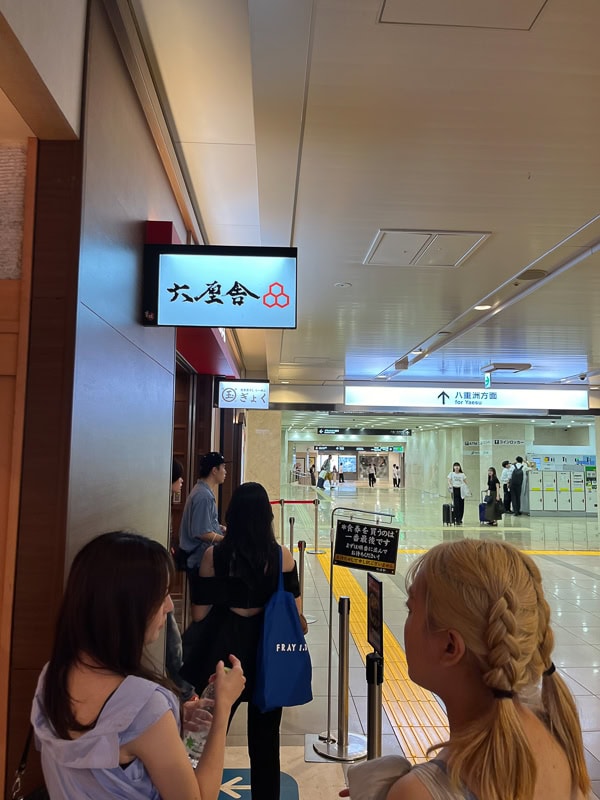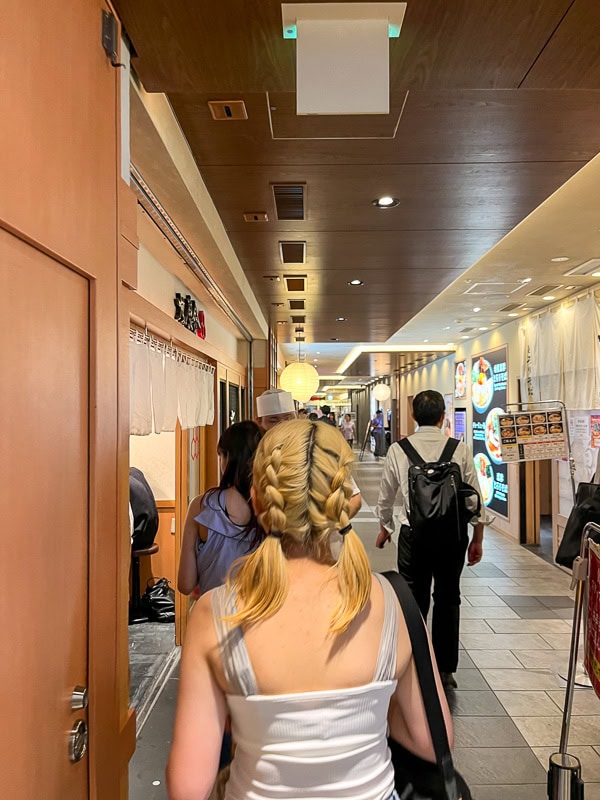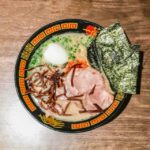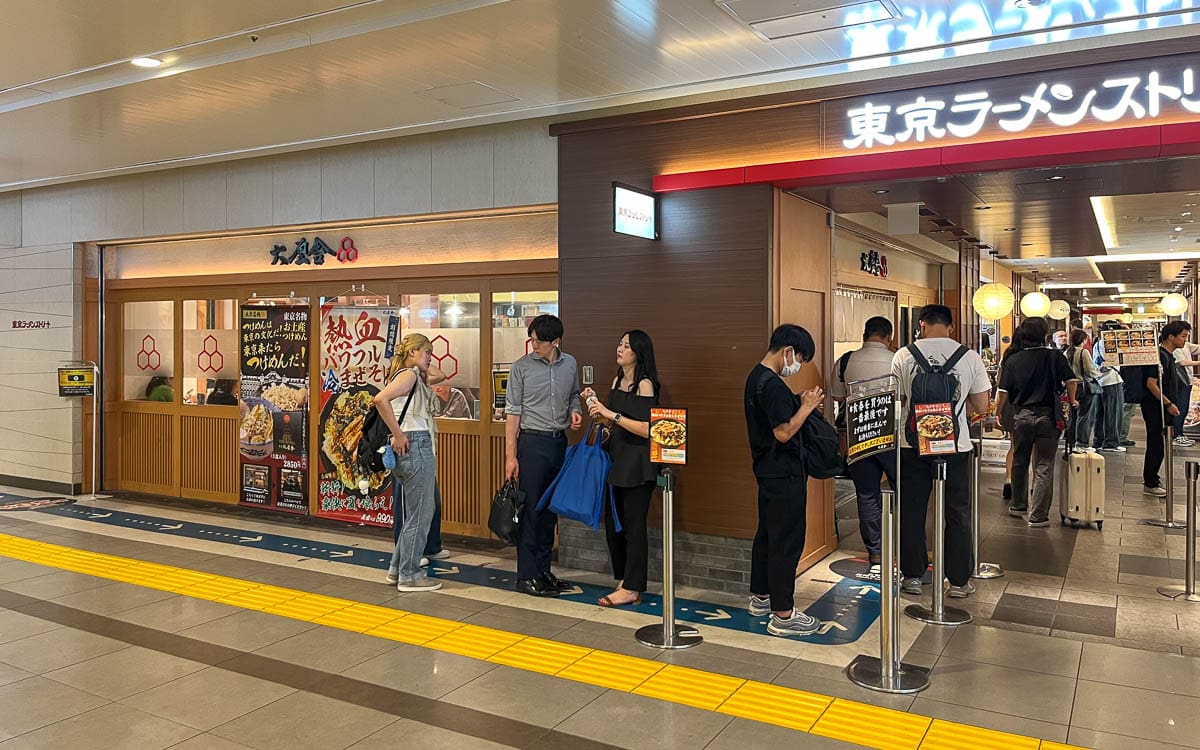
It was my first night in Tokyo. After traveling for almost a day, I stopped by my hotel, dropped off my bag, and headed straight out for food before jet lag got me. I had one thing on my mind: ramen. Staying near Tokyo Station, I felt my best option would be to visit Ramen Street.
Ramen Street is a collection of eight ramen shops in an underground mall attached to Tokyo Station. Though located in a shopping mall, the ramen restaurants are popular with tourists and locals, including Japanese salarymen looking for a quick, affordable meal.
One of these ramen shops is Rokurinsha, famous for its tsukemen, a type of ramen of thick noodles dipped in a rich broth. The dish is typically served in two bowls: one for the noodles and one for the broth. Although I knew there would be a line, I was certain the wait would be worth it.
Arrival at Rokurinsha
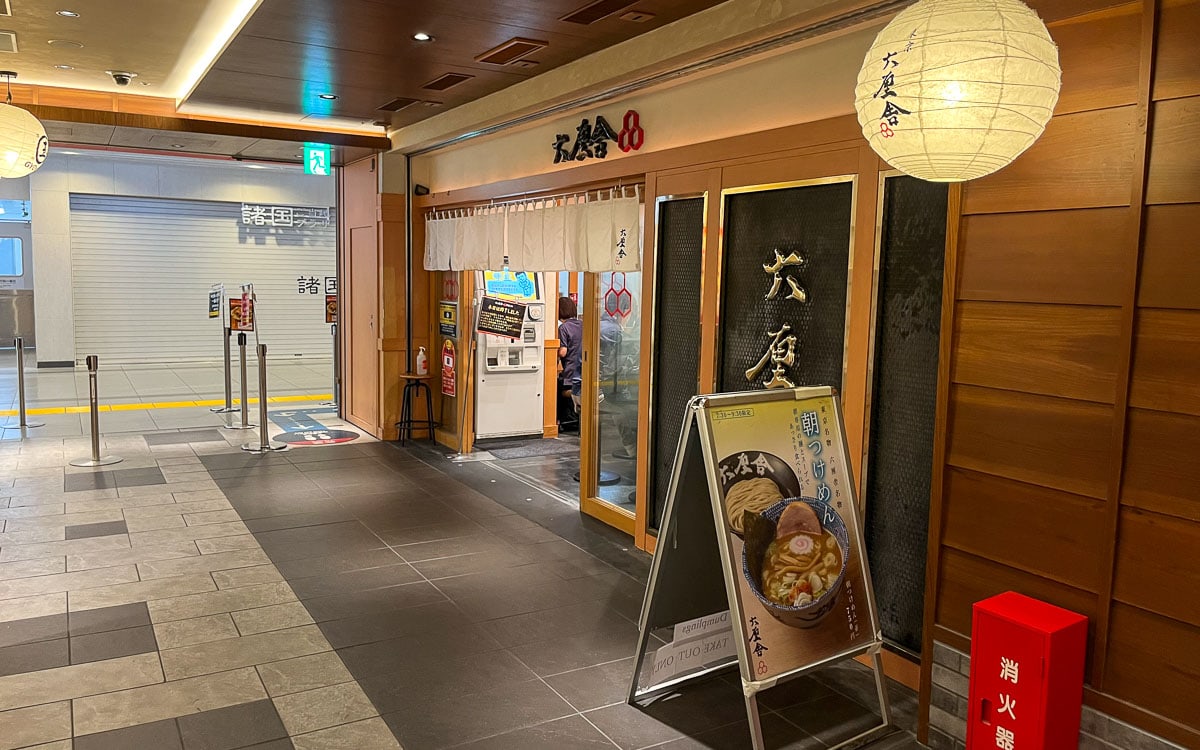
As I mentioned, I found the restaurant on the lower level of a shopping mall attached to Tokyo Station. While it might sound strange to eat ramen at a train station, in Japan, you find some of the best restaurants at stations.
It can be challenging to find the shop if you don’t know where you are looking. If you get lost, head to the basement of First Avenue Tokyo Station near the Yaesu Central Exit on the eastern side of Tokyo Station.
Even though they closed at 10:30 PM, the restaurant was still busy at 9:45 PM, and there was still a line out front. Due to their popularity, I expected there to be a wait. Thankfully, there was only a few customers waiting out front of the restaurant.
Waiting in Line
When I arrived at Rokurinsha, I joined the back of the line. Since I was the only foreigner in the line, I was unfamiliar with their queuing system. People were leaving and returning to their spots, and others were entering the restaurant ahead of me, which puzzled me.
After a few minutes of confusion, a friendly worker dressed in white approached me. Though he did not speak English, he pulled me from the line and led me to a vending machine where I ordered.
After ordering, the staff member led me back to the same line, where I waited for an open seat. About 15 minutes later, he signaled me and guided me to a spot at the counter.
Ordering From the Vending Machine
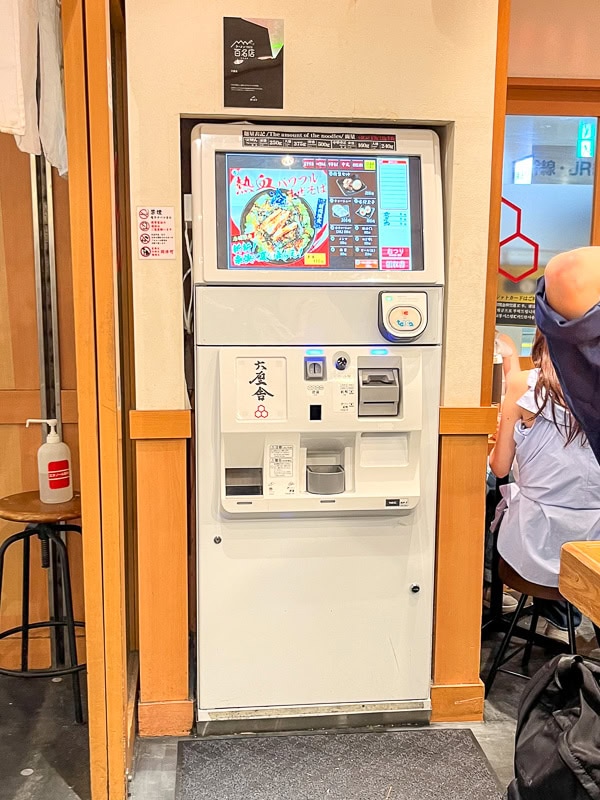
Like most ramen shops in Japan, I ordered my meal through a vending machine. Thankfully, it included a screen with photos and an English option, making the ordering process simple.
As with most ramen restaurants in Japan, they only accepted cash. Uniquely, they also accepted Suica transportation cards, but they did not accept credit cards.
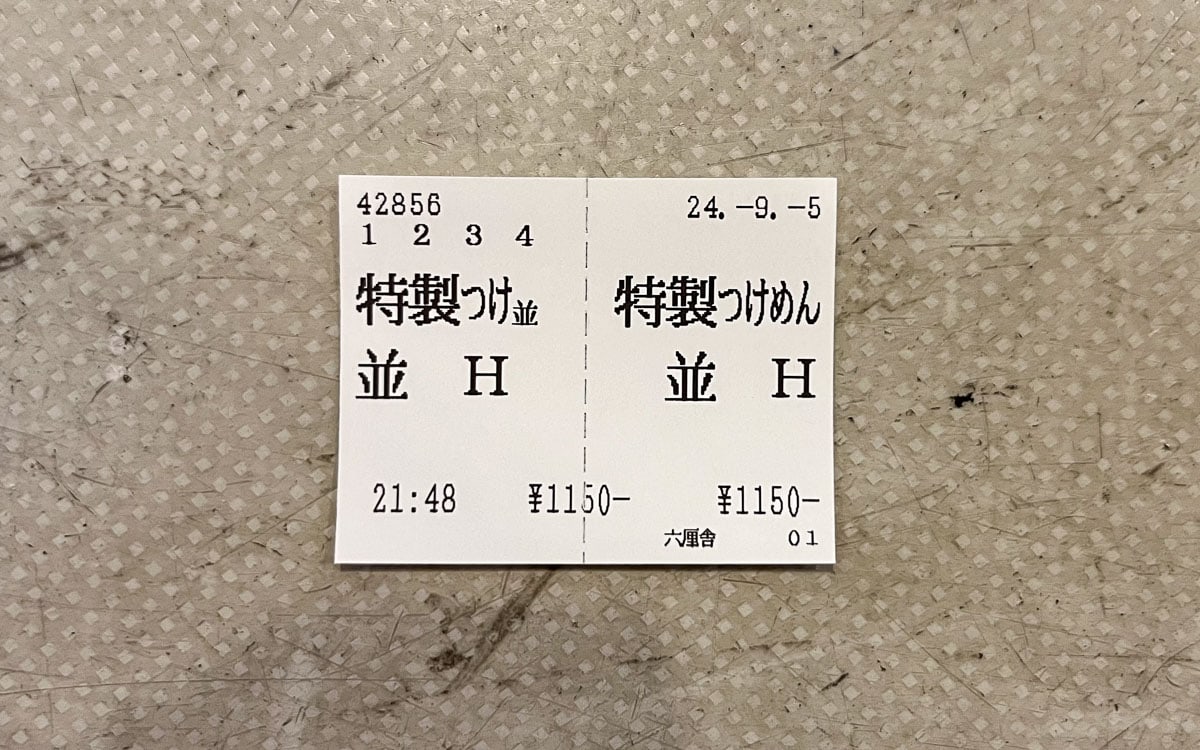
To order, I inserted cash into the machine, selected the item I wanted, collected my change, and retrieved the ticket it printed. I then got back in line.
Interior of Rokurinsha
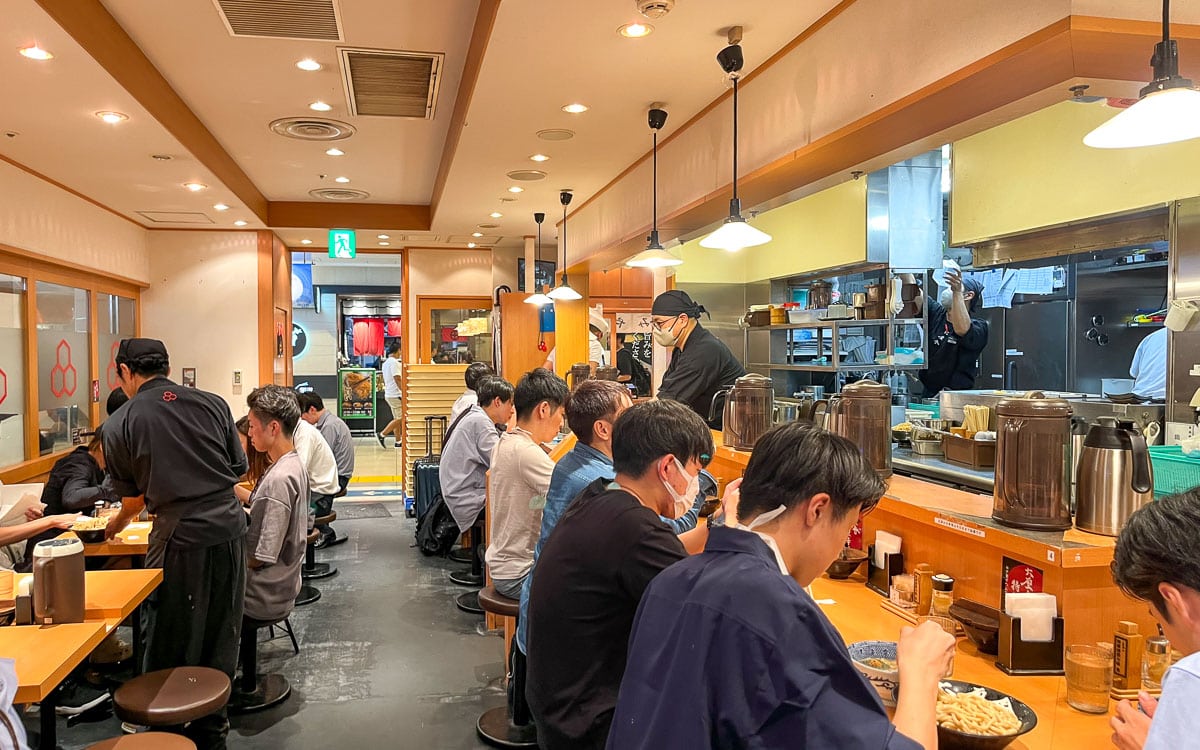
The interior of Rokurinsha was typical of most ramen shops in Japan—open and bright, with simple décor.
The space featured wooden accents, white walls, and clean lines, creating a modern yet welcoming atmosphere. Despite the contemporary design, it was clear that the focus was on the food.
Though near closing, the restaurant was busy with locals and business workers enjoying a late-night meal. While located at Tokyo Station, one of the busiest train stations in the world, I was the only foreigner. Everyone else was a local.
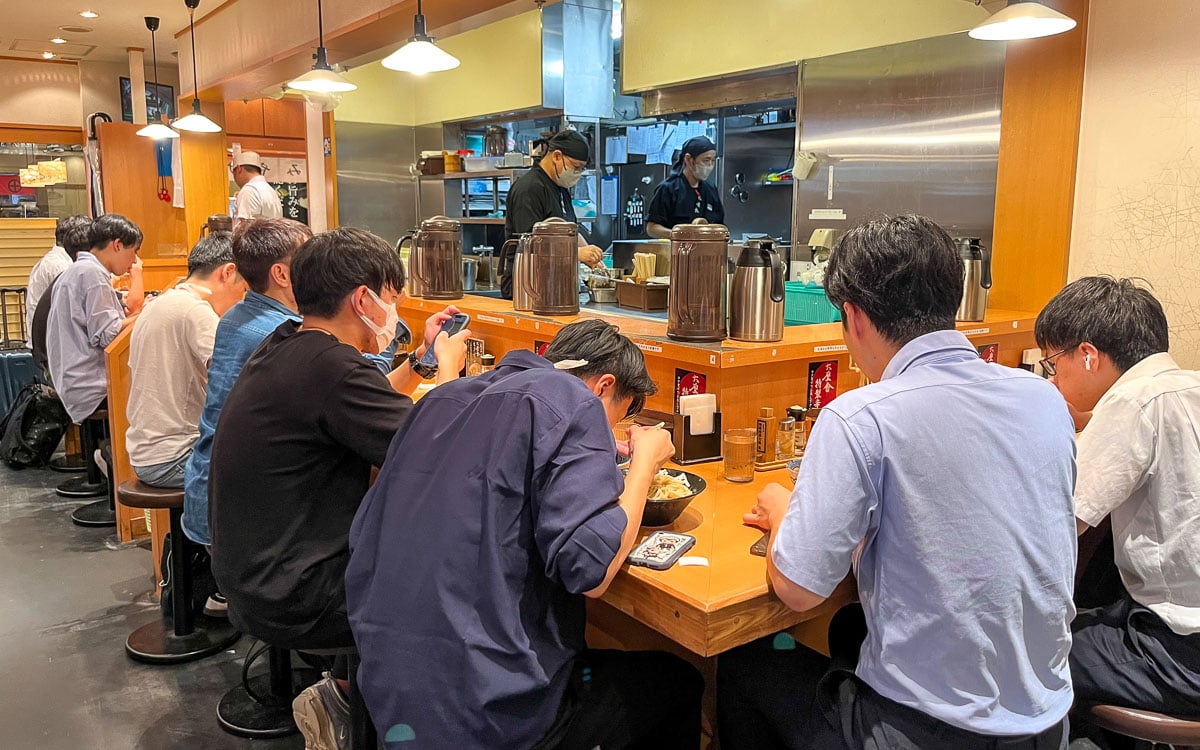
On one side of the restaurant were a few tables. On the other side was an L-shaped counter surrounding a small, open kitchen.
Even though it was busy, the space was quiet, with guests slurping noodles, chefs greeting customers, train announcements, and traditional music playing in the background.
The final thing that caught my attention was how clean the interior was, thanks to the staff consistently cleaning tables after a guest left.
Rokurinsha Menu
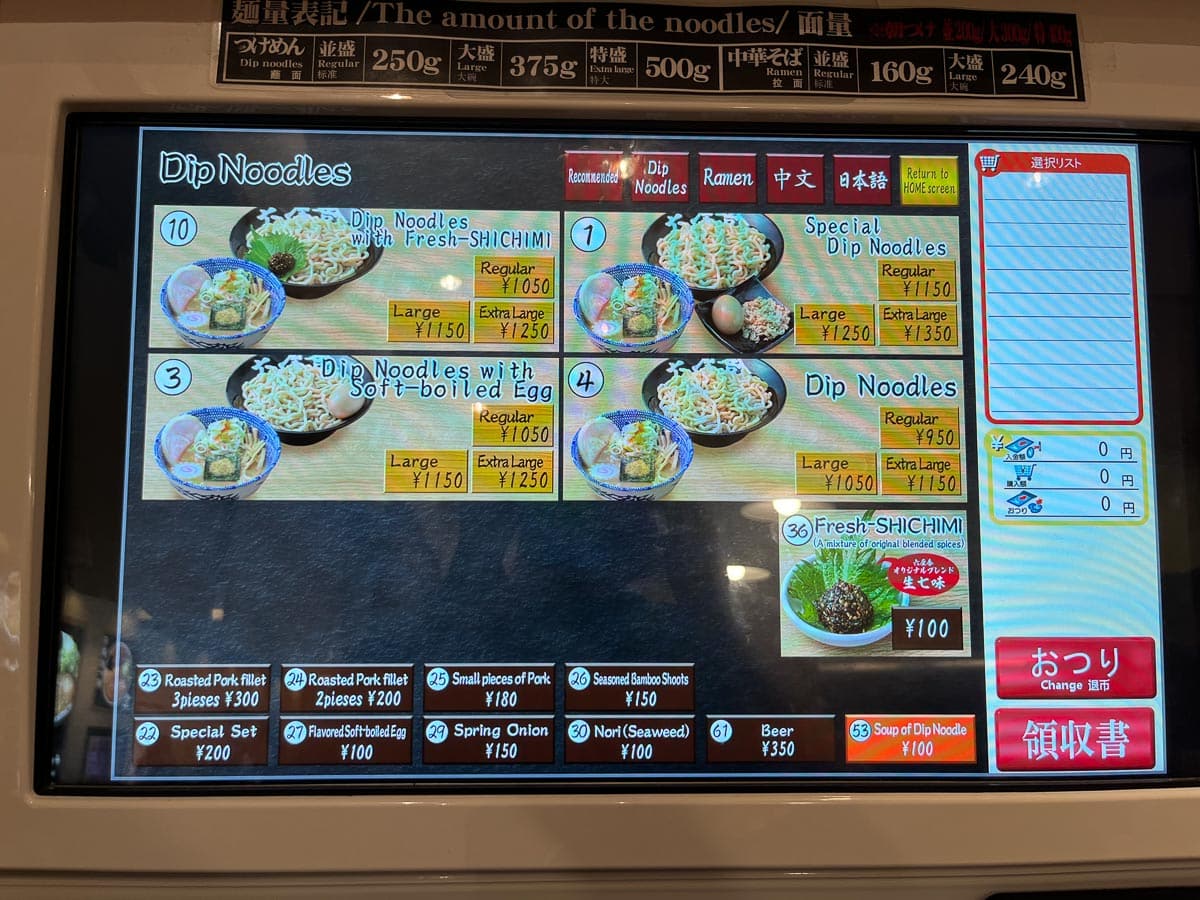
Most people visit Rokurinsha for their tsukemen, a type of ramen featuring broth and noodles served separately. Their tsukemen is what they are famous for, and this is what you want to order.
In the past, Rokurinsha only served tsukemen. Today, they serve additional options, including maze soba and traditional ramen.
The menu at Rokurinsha included four similar tsukemen options: Dip Noodles, Special Dip Noodles, Dip Noodles with Soft-Boiled Egg, and Dip Noodles with Fresh Shichimi, a Japanese spice blend.
The only differences were what the tsukemen included, whether a soft-boiled egg, minced meat, or shichimi. Each option came in regular, large, or extra large.
In addition, there were add-ons, including roasted pork, bamboo shoots, soft-boiled egg, spring onion, nori (seaweed), shichimi, and additional soup broth.
The only drink option on the menu I saw was beer. However, there were water containers on the counter and at each table.
Dip Noodles with Soft-Boiled Egg
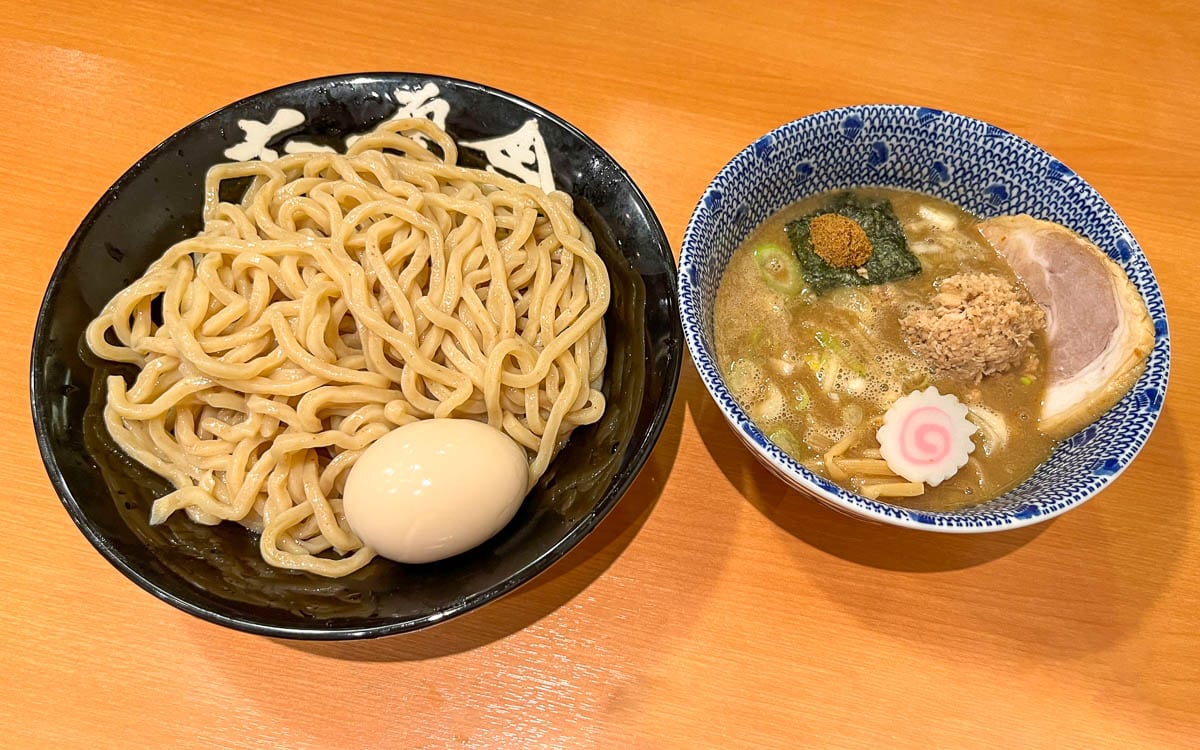
The broth was served warm but not piping hot. It had the perfect consistency—not too thin, but thick enough to cling to each noodle. As with other bowls of ramen, the broth thickened as I reached the bottom of the bowl.
It had a rich, umami flavor with a hint of sweetness and a salty, ocean-like flavor. You really have to taste it to appreciate it.
If you’ve ever eaten a noodle dish in Japan, you know it often includes an enormous amount of noodles. That’s why I opted for the regular size. Even the regular portion was large.
I read that the noodles were made offsite at their factory, specifically designed for the shop. The result was thick, wavy noodles with a firm yet tender, chewy bite.
It was unique how the noodles were served cold and warmed up when dipped into the broth. While this process cooled the broth, it allowed the noodles to soak up its rich flavors. And this is why tsukemen is so great.
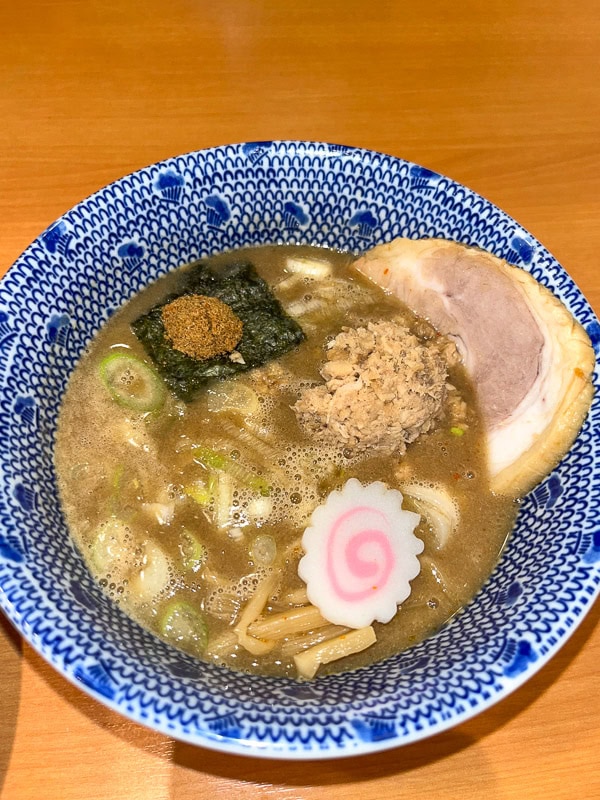
A seasoned soft-boiled egg with a golden yolk was served with the noodles. The yolk was slightly runny yet slightly cooked. I added the egg to the broth and mixed it for extra richness.
Inside the bowl was a slice of chashu pork. The fat was rich, tender, and melted in my mouth. The meat was thick, but not too thick, with a good bite and porky flavor.
The final components were moist minced pork, green onions, a tender and bouncy fish cake (narutomaki), fermented bamboo (menma), salty fish powder (gyofun), and salty seaweed (nori).
In the end, the tsukemen was simple yet complex. With its combination of flavors and textures, I can see why people wait to try it.
Condiments
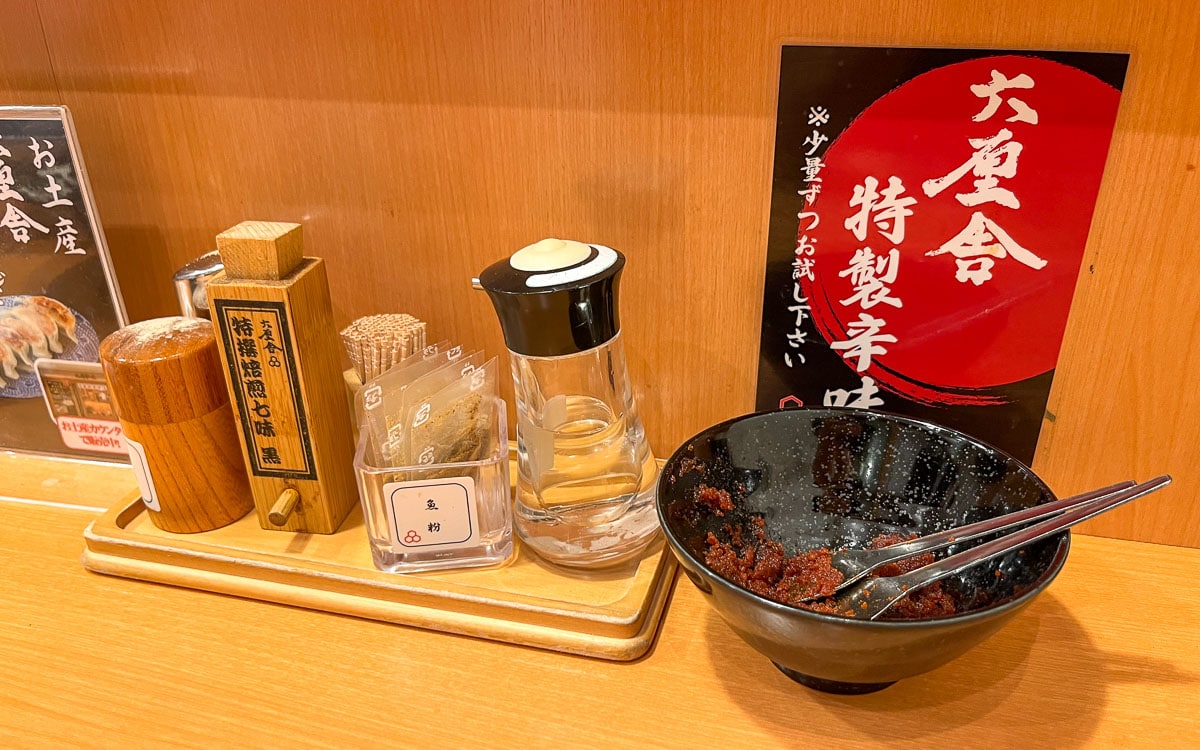
On the counter was an assortment of condiments used to enhance the flavors of the dipping broth.
Condiments included Japanese seven-spice (shichimi togarashi), ground pepper, fish powder to enhance umami, and soy sauce and vinegar for extra flavor.
There was also a special spicy seasoning paste, which was smoky and spicy. While I can handle spicy foods, I found this seasoning very spicy. I recommend adding it gradually to adjust the heat level to your preference.
Service
Due to the language barrier and ordering ramen through the vending machine, I had limited interaction with the staff at Rokurinsha.
Despite the lack of communication, I felt welcome during my visit, even though I was the only foreigner in the restaurant.
Upon arrival, a friendly worker helped guide me to the vending machine and back in line. And when I sat down, the staff greeted me with a smile.
My food arrived almost immediately after I sat down, allowing me to eat quickly and move on. Additionally, the space was clean, thanks to the staff members who cleaned up soon after guests left. Both of these factors helped keep the line moving smoothly.
Conclusion
I remember the first time I tried tsukemen at Fuunji near Shinjuku Station. Having separate bowls for noodles and broth seemed unique to me.
Though I’ve visited Japan many times, I rarely eat tsukemen. I’m not sure why since I always enjoy it when I do.
Since that visit, I wanted to try tsukemen again. So when I discovered Rokurinsha near my hotel, I knew I had to try it. And I am glad I did.
The combination of rich, salty broth and fresh, tender noodles was unique and delicious. Though I had to wait in line, it was well worth it.
The shop had a simple décor and a cozy, local atmosphere that added to its charm. I love to find these places on my visits to Japan.
In conclusion, if you are looking for an excellent tsukemen ramen shop in eastern Tokyo, near Tokyo Station, look no further than Rokurinsha in the basement of First Avenue Tokyo Station.
Pros
- Rich, salty, and umami broth
- Fresh, tender, and chewy noodles
- Clean and modern décor
Cons
- Often a line of 30 to 60 minutes
- Cash or IC card only
Address & Contact
Japan, 〒100-0005 Tokyo, Chiyoda City, Marunouchi, 1-chōme−9−1 東京駅一番街 B1F Tokyo Ramen Street, 内
Phone: +81 3-3286-0166
Website: https://rokurinsha.com/
Hours
Monday: 7:30 – 9:30 AM, 10:00 AM – 11:00 PM
Tuesday: 7:30 – 9:30 AM, 10:00 AM – 11:00 PM
Wednesday: 7:30 – 9:30 AM, 10:00 AM – 11:00 PM
Thursday: 7:30 – 9:30 AM, 10:00 AM – 11:00 PM
Friday: 7:30 – 9:30 AM, 10:00 AM – 11:00 PM
Saturday: 7:30 – 9:30 AM, 10:00 AM – 11:00 PM
Sunday: 7:30 – 9:30 AM, 10:00 AM – 11:00 PM
Map
Last Updated on November 6, 2025
